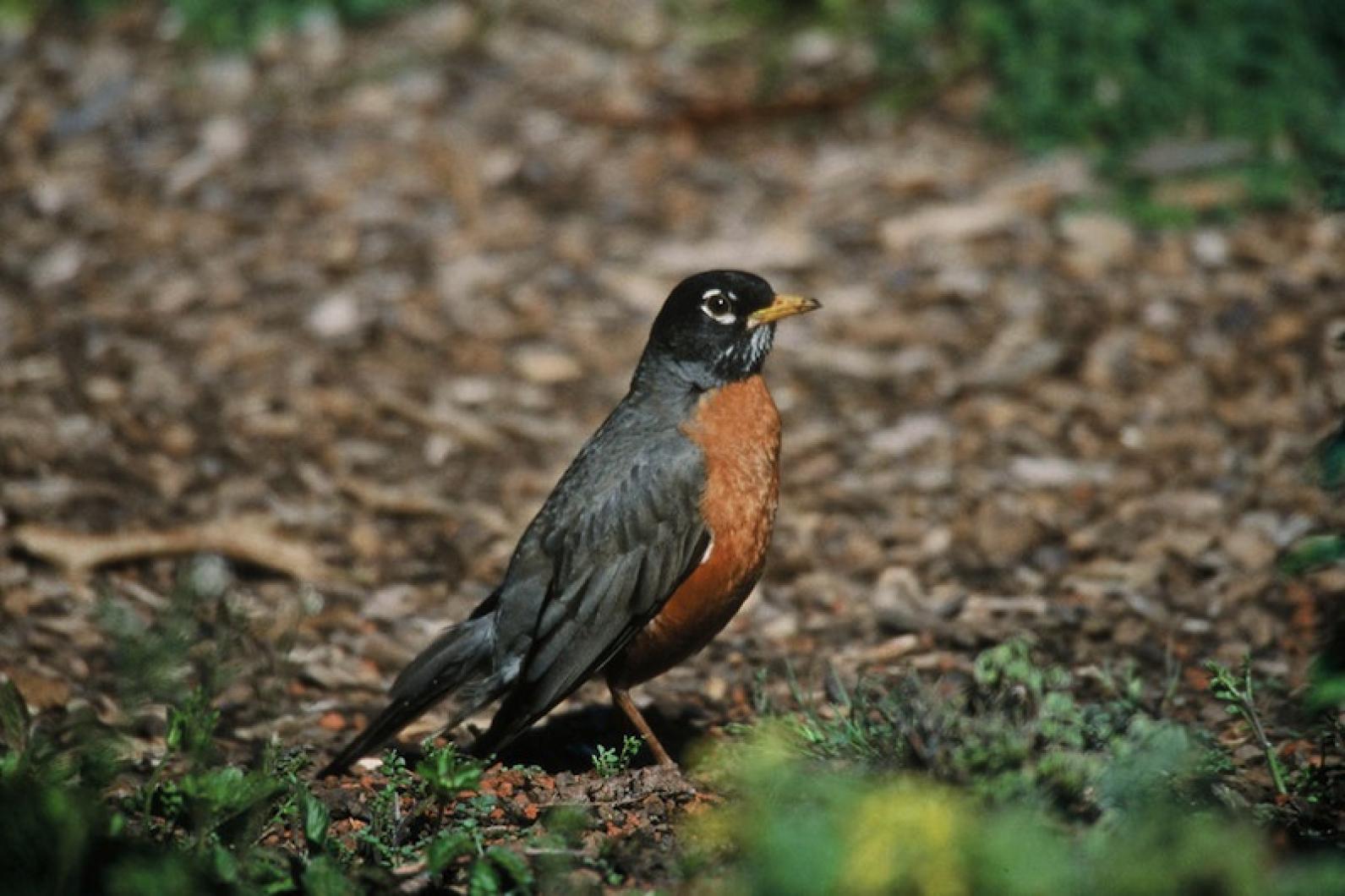If there is a more widely recognizable on the Vineyard than the American robin, we’ve yet to hear of it. The combination of a gray back and an orange breast and belly on a robin is obvious and known to all. Sheer numbers help boost our familiarity with robins: this species is a very common nesting bird on the Island, and contrary to the cliché of the first robin of spring, robins are present and often numerous throughout all but the most brutal winter weather.
Behavior helps make this bird recognizable too. Robins are extremely tolerant of human activity and they flourish in areas that have been heavily modified by humans, such as residential neighborhoods. It seems as if every yard on the Vineyard has at least one nesting pair of robins (though these birds also live quite comfortably in wooded natural areas). During migration in late fall and early spring, robins can be mind-bogglingly common on the Vineyard as large flocks pass overhead or land in yards and agricultural fields to feed. Communal nighttime roosts may hold many thousands of birds.
Most of the robins that nest here probably migrate south, to be replaced over the winter by birds from farther north. As winter starts to fade, the motion reverses and around the start of April the robins that will nest here begin to court and establish territories. Listen in particular for their song, which is given mainly at dawn and dusk: it consists of an unending series of lilting, two or three-note phrases, given in a clear, musical whistle. At this point in the season also, flocks of robins begin to disband as individual birds stake out their personal territory, which they defend vigorously against all comers.
Resourceful birds, robins have a varied diet. You can help them out in winter by planting shrubs and trees like American holly, winterberry, or bayberry, that produce berries that last into the winter (fruit makes up a major fraction of a robin’s diet in winter). During the warmer months, robins are voracious consumers of invertebrates, making them the gardener’s friend: true, they eat earthworms, but they also eat large quantities of caterpillars and beetles that are harmful to cultivated plants.
A robin’s nest is a robust structure of mud and woven grass and fiber, usually built in the fork of a branch of a dense tree or shrub. These birds aren’t fussy about where they build their nests, but actually producing offspring is another question. Young robins are highly vulnerable to predators including domestic cats. So measures you can take to help robins breed included keeping your cat indoors and securing all trash in an animal-proof enclosure so don’t attract skunks or raccoons (which will also eat robins and robin eggs).
An important link in the ecosystem of residential neighborhoods, robins are as useful as they are familiar. We hope a pair is moving into your yard for the summer!







Comments
Comment policy »